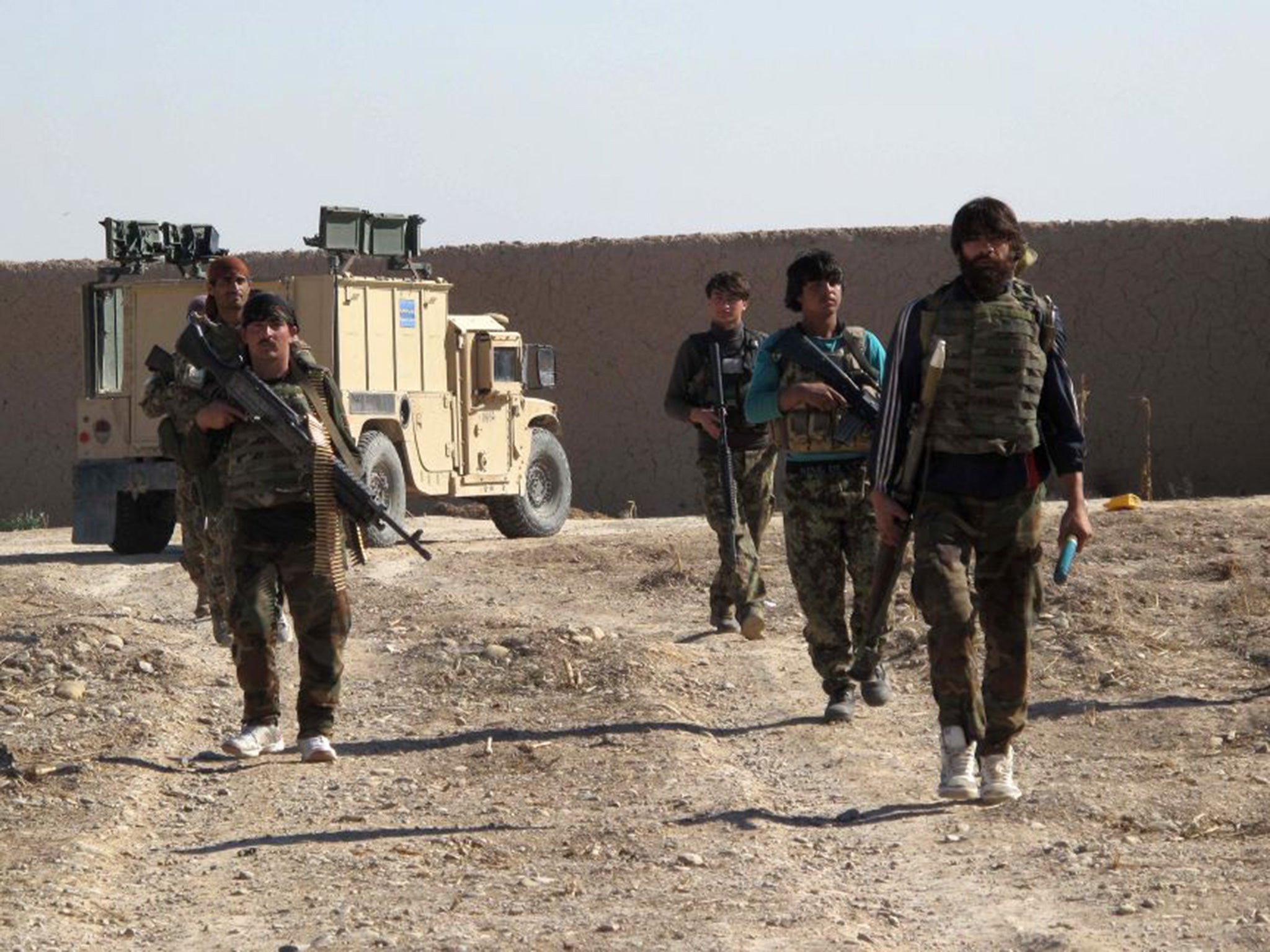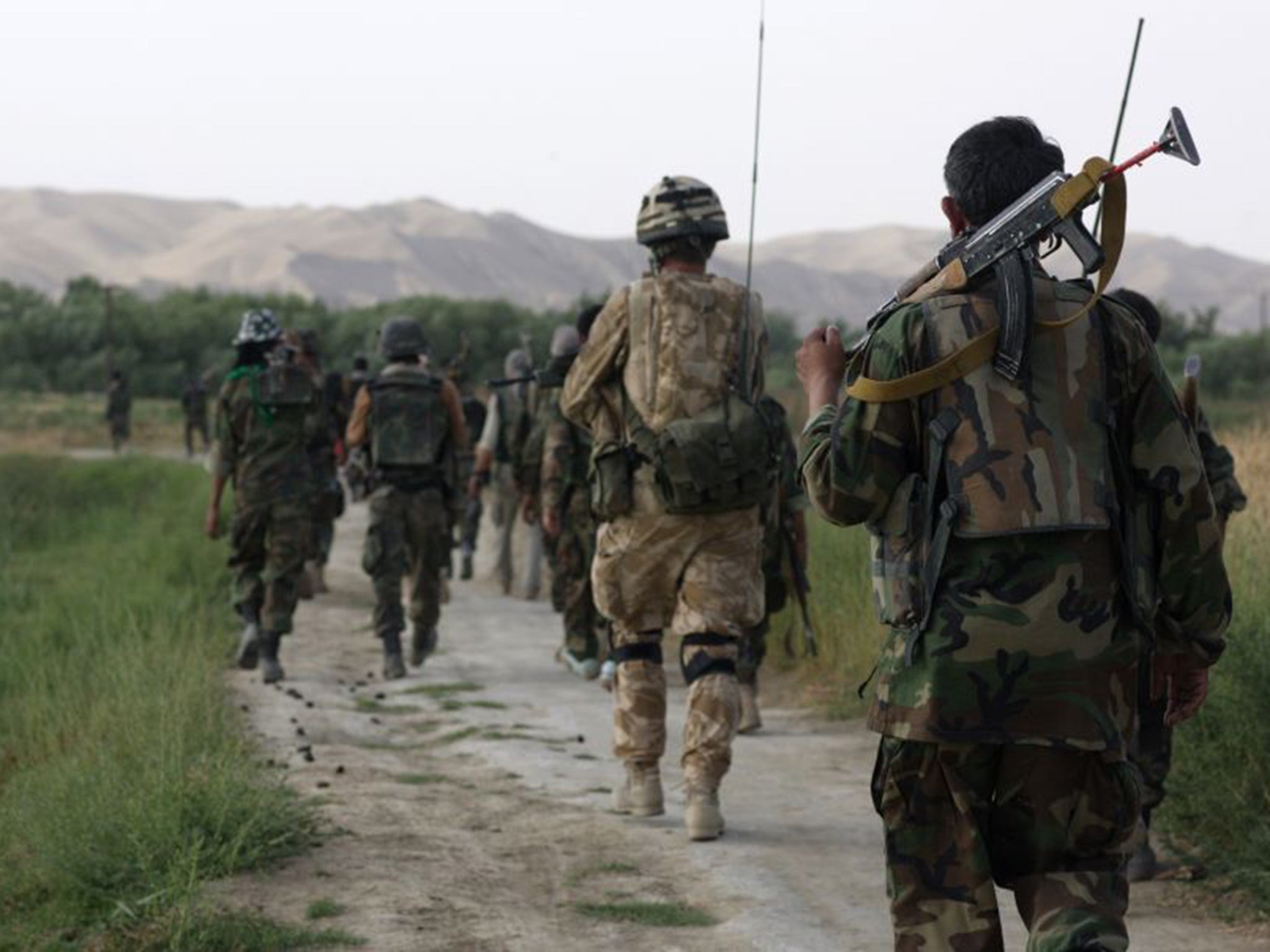Sangin: Besieged Afghan forces lay the blame on their own government
Sangin became known as 'the most dangerous place in Helmand' because of the ferocity of attacks that claimed the lives of 106 British service personnel


As we gazed out on to a desolate expanse of scrub and sand on which he was going to build Camp Bastion, the British military’s headquarters in Afghanistan in 2006, Lt-Col Simon Winkworth, of the Royal Engineers, had a request. “Please don’t call it our Dien Bien Phu,” he said.
The UK did not suffer the same fate in Helmand as the French did when a prolonged siege of that base effectively brought their occupation of Vietnam to an end. There were, however, lots of mini sieges with outnumbered troops pinned down in towns such as NawZad, Musa Qala and Sangin by the Taliban.
The situation changed with the increase in British troop numbers and the “surge” into the province of US military. Afghan forces, now under siege in the same towns, will have nothing like that scale of support after Isaf (the International Security Assistance Force) ended its combat mission last year.
US special forces have been in action in Helmand now for six weeks and will be deployed to Sangin. They may succeed in helping beleaguered Afghan forces to save the district centre, but they would not be able to turn the tide by themselves.
Last month, a US special forces unit led Afghan soldiers to the district centre of Marjah which had been surrounded by the Taliban. The arrival of the force boosted the demoralised defending police units who drove back the enemy. But by last week the Taliban were, once again, back. The towns the Taliban are determined to take over have symbolic as well as strategic value.
Marjah was retaken in 2010 from a Taliban “shadow government” to demonstrate that the Kabul government held sway across the country. Sangin became known as “the most dangerous place in Helmand” because of the ferocity of attacks that claimed the lives of 106 British service personnel. Gereshk was the commercial centre of Helmand and portrayed as an example of progress and stability in the province. Musa Qala became a barometer of whether the process of “Afghanisation” was working; the allegiance of its elders fluctuating between the Taliban and Kabul.

Numbers were of huge significance to the Western forces as it became clear that there were simply not enough initially deployed to capture and hold ground. In 2006, I was in the town of NawZad with around 150 British, mainly Gurkha, troops, coming under constant attacks and the same year I was in Garmsir when just 17 British troops, alongside 10 Estonians and 200 Afghans tried and failed to take control. Four years later I accompanied an American force of 1,600 which recaptured NawZad; the previous year, 2,000 US Marines had taken Garmsir. The operation to wrest control of Marjah took a force of 15,000.
The US special forces sent on the Marjah mission last month numbered only eight. At its peak the international force in Afghanistan stood at more than 130,000; now around 12,000 remain. In Helmand there is a contingent just 300 strong, 10 of them British. It is based at Camp Shorabak, attached to Camp Bastion, 62 miles from Sangin along roads pitted with mines.
US air strikes will be increased in Helmand, but there are no plans for a drastic increase in the numbers of boots on the ground.
The Afghan forces, who are expected to do the fighting, say they lack arms and desperately need air strikes against insurgent positions from the US. However, it is their own government the Afghan soldiers and police blame for what they claim has been a huge mistake. After gaining power in a disputed election the current president, Ashraf Ghani, reversed the policies of his predecessor, Hamid Karzai, who blamed Pakistan for orchestrating Taliban attacks.
In his first visit to Pakistan the new President broke protocol by visiting the hierarchy of the Pakistani army and the secret police, ISI, instead of the elected government. Reaching out to the Pakistani military and sidelining his own defence chiefs, was supposed to bring to bring the Taliban to the negotiating table and end the violence. Neither has happened. Kabul is now under regular attack, and government forces in Helmand are having to survive in a state of siege.
Join our commenting forum
Join thought-provoking conversations, follow other Independent readers and see their replies
Comments
Bookmark popover
Removed from bookmarks